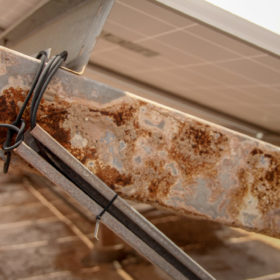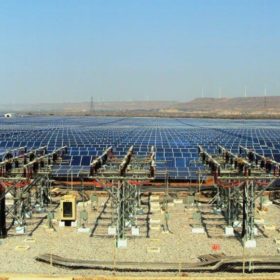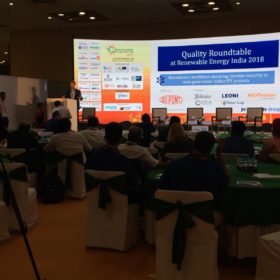The long read: A seaborne alternative to burnt cash
Floating PV has matured quickly, but while the opportunity of solar on the sea may appear immense, there is nothing trivial about the challenges posed by salinity, wind, and waves. However, technical and financial solutions are appearing on the market, giving small island communities a chance to reduce their reliance on polluting diesel.
The long read: Rising hopes for floating PV in India
The full house at the Future PV Roundtable at this year’s Renewable Energy India Expo was evidence of the buoyant expectations for the application of floating PV in the Indian market. But with the technology still at a relatively early stage in the country, many concerns are rising to the surface.
The long read: Considering the competitive landscape for HJT
The benefits of heterojunction technology are well known. But as the first modules come onto the market from REC Group’s new HJT lines, the competitive landscape is crowded, but not without opportunity.
The long read: Feathered friends turn foe
A floating PV array in the Netherlands has brought a community together while highlighting the value of module lever power electronics on water.
Rising interest in floating PV at Future PV Roundtable
High levels of interest in floating solar installations in the Indian market was demonstrated on the second day of the Renewable Energy India Expo, which concludes today in New Delhi. The pv magazine Future PV Roundtable addressed the theme in a full-house conference session, where many questions were raised about module and array durability and performance, along with monitoring, O&M and safety considerations.
In leaps and bounds
Policies, non-government initiatives and market forces have started driving the adoption of more rigorous quality-assurance practices in Indian PV project and module manufacturing this year.
Value of local manufacturing demonstrated, utilization up but still a long way to go
Indian module makers are gearing up for an end-of-year surge of procurement for solar projects in the country and hoping that their investments in incorporating global manufacturing benchmarks will translate into enhanced sales offtake.
Hundreds of MW of floating PV set to come online in India
With developers facing land constraints, a huge pipeline of floating PV projects is currently in the early stages of development in India. While the outlook for solar on water in the fast-moving solar marketplace appears bright, there is much industry learning still to be had and a steep learning curve for component suppliers and developers alike.
Have your say on NSEFI best practice guidelines for utility scale PV
The National Solar Energy Federation of India (NSEFI) is continuing to step up its efforts to ensure the quality of large scale solar projects. The body is now looking for stakeholder input into its new best practice guidelines for PV power plant projects, as a part of its ongoing Quality Taskforce initiative.
VPPs as congestion buster
Two related challenges have become barriers to increasing penetration levels for rooftop solar: the hosting capacity of the grid, and the need to maintain stability during periods of peak demand. The Future PV Roundtable, held alongside The smarter E event in Munich, looked at how distributed energy resources such as PV and battery storage, along with demand-side flexibility, can help to meet these challenges – all thanks to VPPs.
















